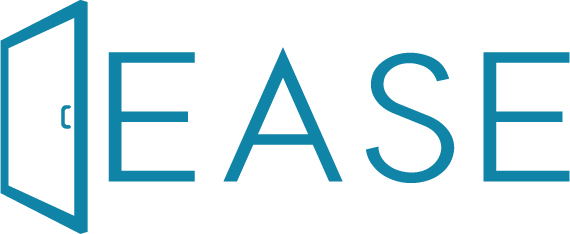
Understanding Fractional CFO Services
In today’s competitive landscape, effective financial leadership is essential for businesses of all sizes. However, the significant cost of hiring a full-time Chief Financial Officer

Depreciation and the methods used to calculate depreciation may seem mysterious, but it’s actually one of the most useful tools in a business owner’s financial toolkit.
Depreciation is a way that businesses can spread the cost of major asset purchases over their useful lives. There are different depreciation methods to calculate and record the cost, but each one has the same overall goal.
Instead of incurring a massive expense of several hundred or thousand dollars in one year, you can spread that expense over every year that you use the asset in your business.
Before we get into the depreciation methods, let’s look at what can and cannot be depreciated.
There are a couple broad guidelines for what assets businesses can depreciate, but just about any asset can be depreciated. You can follow these guidelines:
● First, you have to own it – if you rent office space or lease a copy machine, you can’t depreciate those things. On the other hand, if you own the building or the copier, you can.
● Second, you have to use the asset in your business. If you own a car, but use it for only personal travel, you can’t depreciate it. On the other hand, if you use your car for both business and personal purposes, some of its value is fair game for depreciation.
● Third, you can determine the asset’s useful life. For some things, this is easy. A computer is good for around three to five years, a car for five to ten if you care for it.
● Finally, the asset has to be useful for more than one year. This eliminates small, consumable assets a business might buy, like office supplies or promotional materials.
There is no lower dollar limit for what assets a business can depreciate, but these rules, along with the accounting hassle, generally limit businesses to depreciating their larger, higher-ticket items.
In the US, certain assets cannot be depreciated for tax purposes. These include:
It’s important to note that while these assets cannot be depreciated for tax purposes, they may still have a useful life and lose value over time. Therefore, it’s important to properly track and account for these assets in a business’s financial statements.

There are a few methods for calculating depreciation. There are also a few asset classes that are limited to specific types of depreciation, but in general, simplest is best.
Straight-line depreciation is the most intuitive to understand. To calculate straight-line depreciation, start with the purchase price of the asset, and the ending, salvage value. If you plan to resell the asset after its useful life is over, use an estimated scrap value. If it will have no value left, use zero.
Find the difference between these two numbers. This is the value that will be depreciated over the life of the asset. Now, divide this amount by the number of years in its useful life. The result is the amount of depreciation that you can take every year on that asset.
Another option is the double-declining balance. The DDB method lets you claim more depreciation in the early years of your asset’s life and less later on. It’s slightly more complicated than straight-line depreciation, so it’s best to turn to outsourced bookkeeping services that will help you get it right.
If you intend to record depreciation as a business expense on your tax return, instead of only on your financial statements, you are required to use the Modified Accelerated Cost Recovery System (MACRS). This is also complicated, so it’s best to consult a tax accountant.
During the accounting period, depreciation is reported in a separate “contra-account” that counts against the value of the asset. Think of a seesaw: every year, more value gets added to the depreciation side of the balance, counting against the value of the asset.
At the end of the period, the depreciation for the current month or year goes on the income statement as an operating expense, thereby reducing profits for the period. The total depreciation over the entire life of the asset is reported on the balance sheet as Accumulated Depreciation.
If the asset you are depreciating is intangible, like a patent, the process is called amortization, but the process is the same.
Suppose you buy a new computer for your business. You pay $3,000 for it. You anticipate using it for five years, and that it will have a salvage value of $0 at the end of that time.
Straight-line depreciation for this asset would look like this:
Beginning value – ending value: $3,000 – $0 = $3,000 This is your depreciable amount.
Total depreciation divided by useful life: $3,000 ÷ 5 = $600
You can take $600 in depreciation every year for five years. At the end of this time, the asset will be fully depreciated. You can continue using it in your business, but you cannot depreciate it further.
Now suppose you used double-declining-balance depreciation. In this case, the formula for depreciation looks like this:
(2x yearly depreciation rate) x book value at beginning of year
Since you’re depreciating over 5 years, that’s 20% of the value per year. So in the first year, you can claim 40% of the computer’s $3,000 cost, or $1,200, in depreciation expense. This is twice what you could get in depreciation under straight-line.
In the second year, the book value of the asset is only $1,800. Again, you can take 40% of the value, but this year, it’s only $720.
In year 3, you can only claim $432 in depreciation. Year 4 is only $259, and year 5 is only $156.
Depreciation is a way of spreading out the cost of an asset over it’s useful life. It can be calculated several different ways, depending on the type of asset and the business’ goals and needs.
Depreciation is an expense. It is tied to the asset you are depreciating and it records how much value is left in the asset, but it is not an asset itself.

In today’s competitive landscape, effective financial leadership is essential for businesses of all sizes. However, the significant cost of hiring a full-time Chief Financial Officer

In today’s fast-paced business world, getting your finances in order is key. From small startups to established businesses, everyone’s looking for ways to make their

Businesses frequently use outsourcing as a way to increase efficiency, save costs, and simplify operations in today’s international market. Offshore and back-office outsourcing are two

1048 Irvine Ave #728
Newport Beach